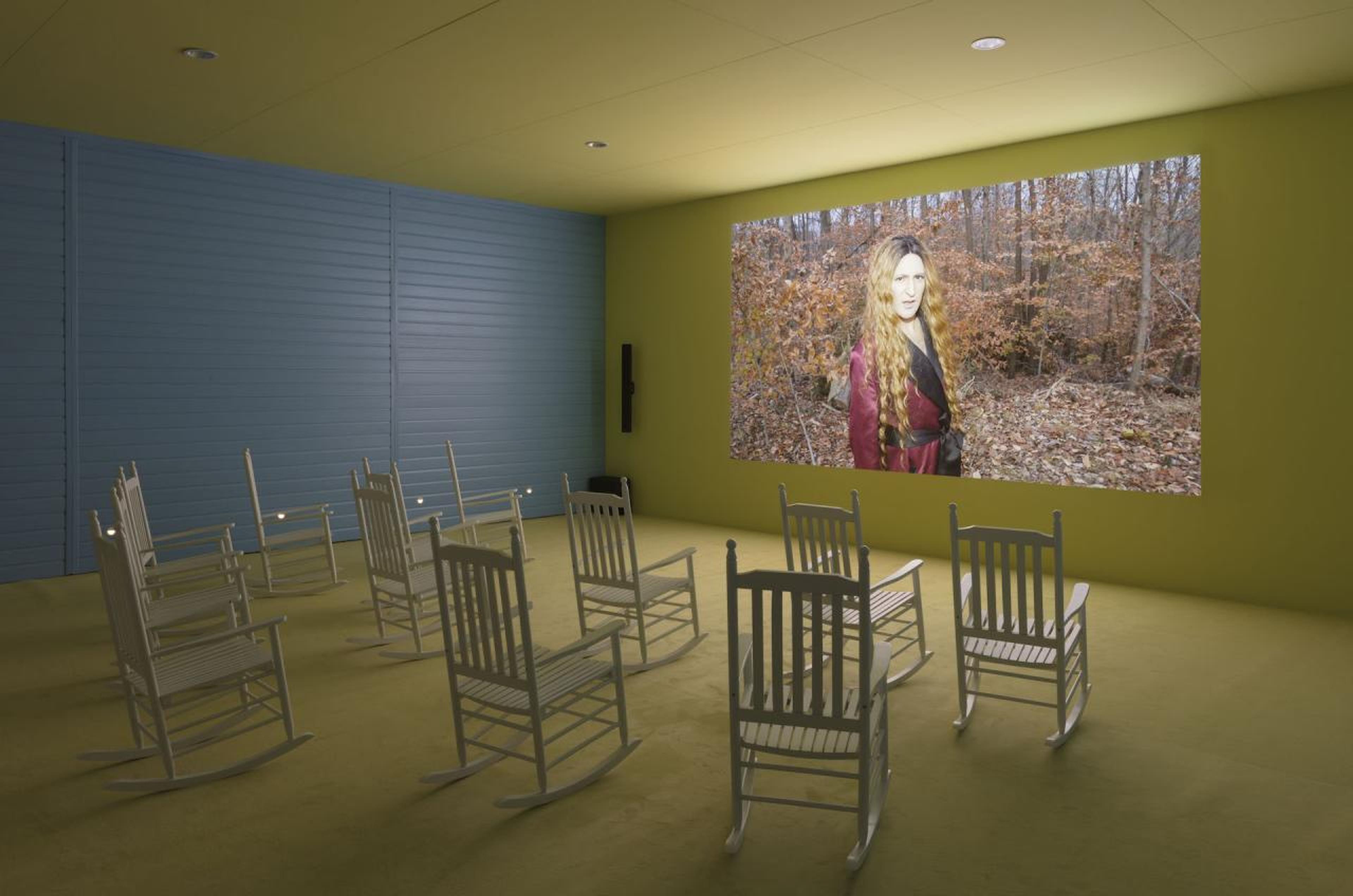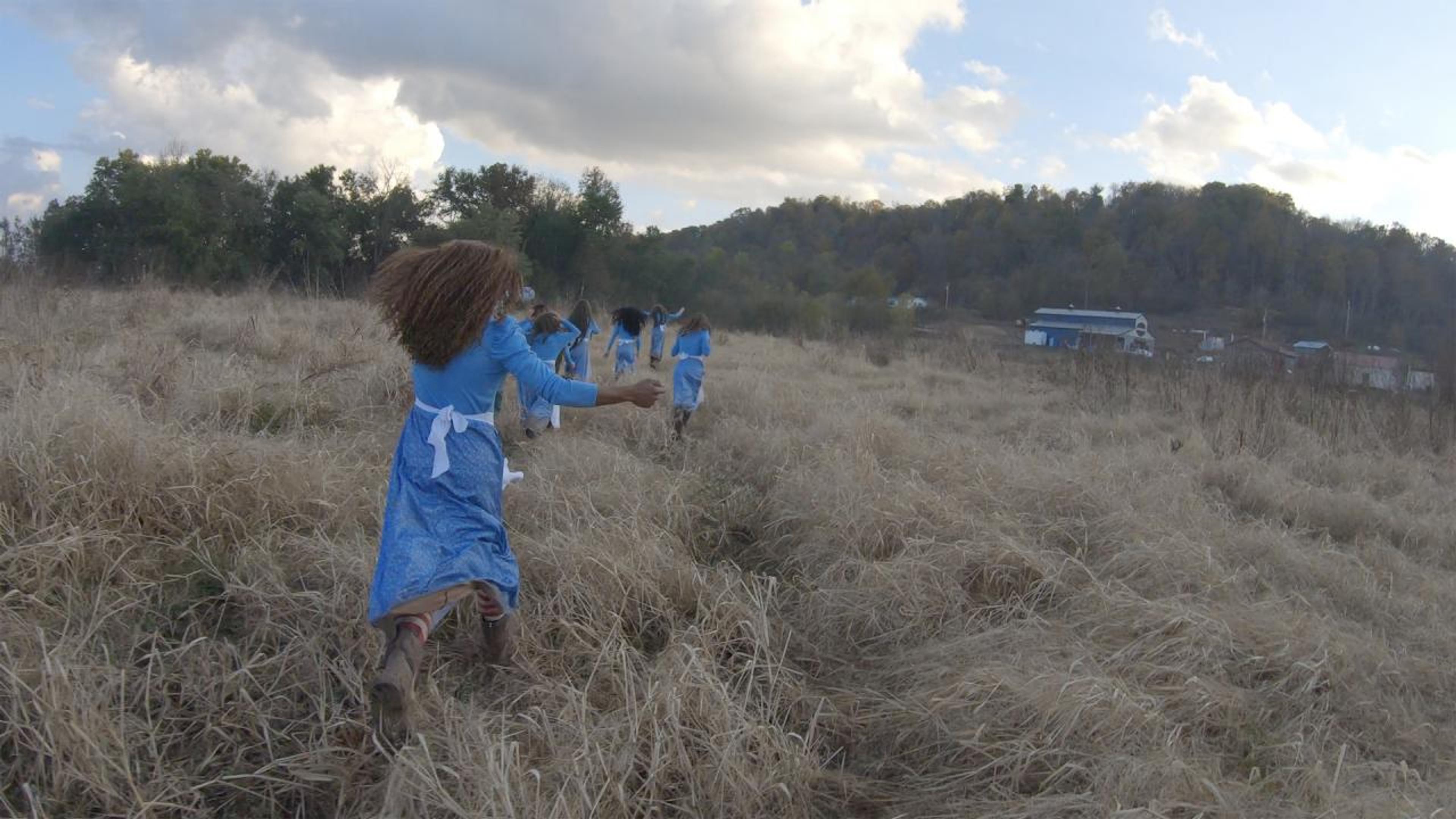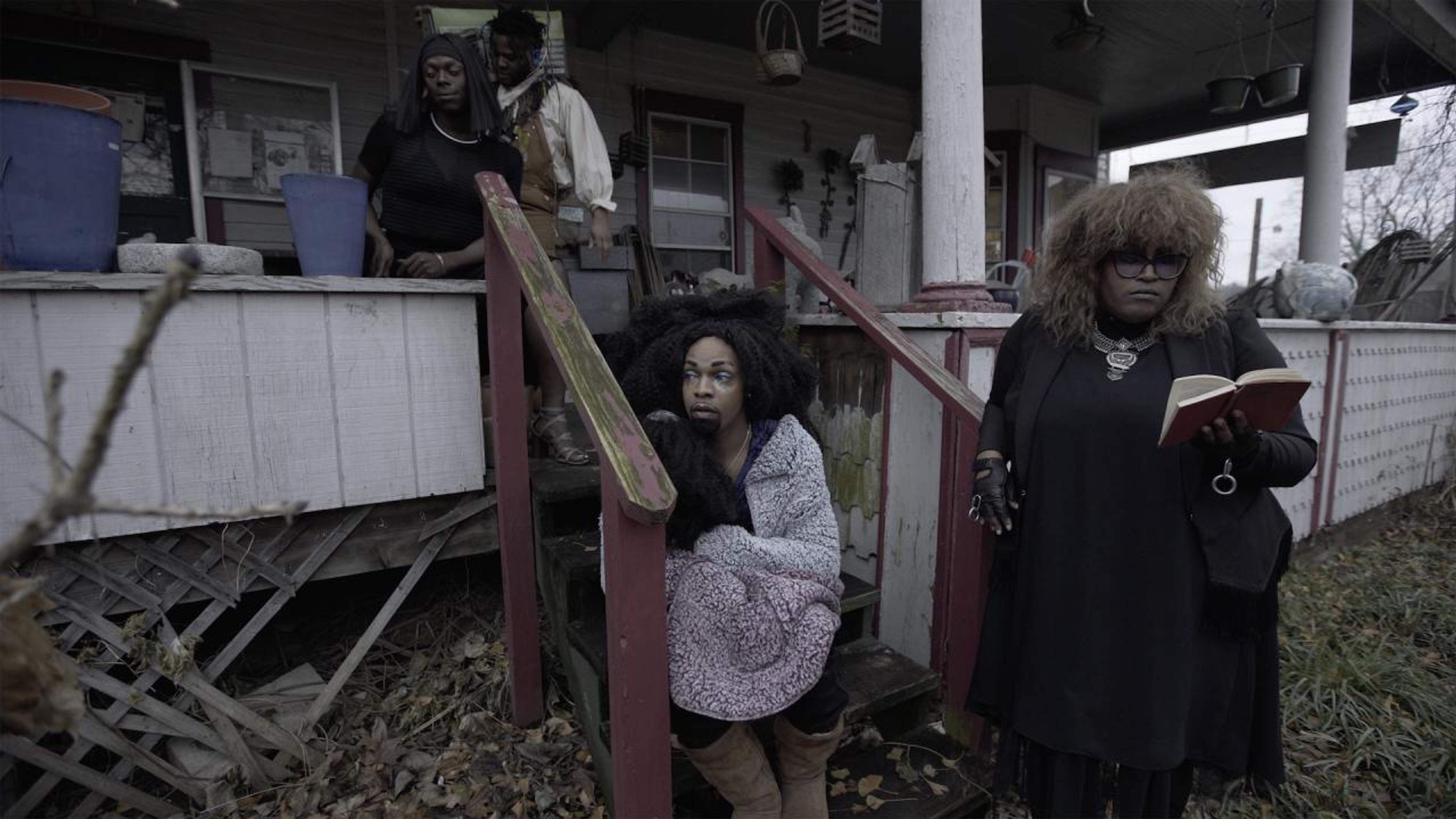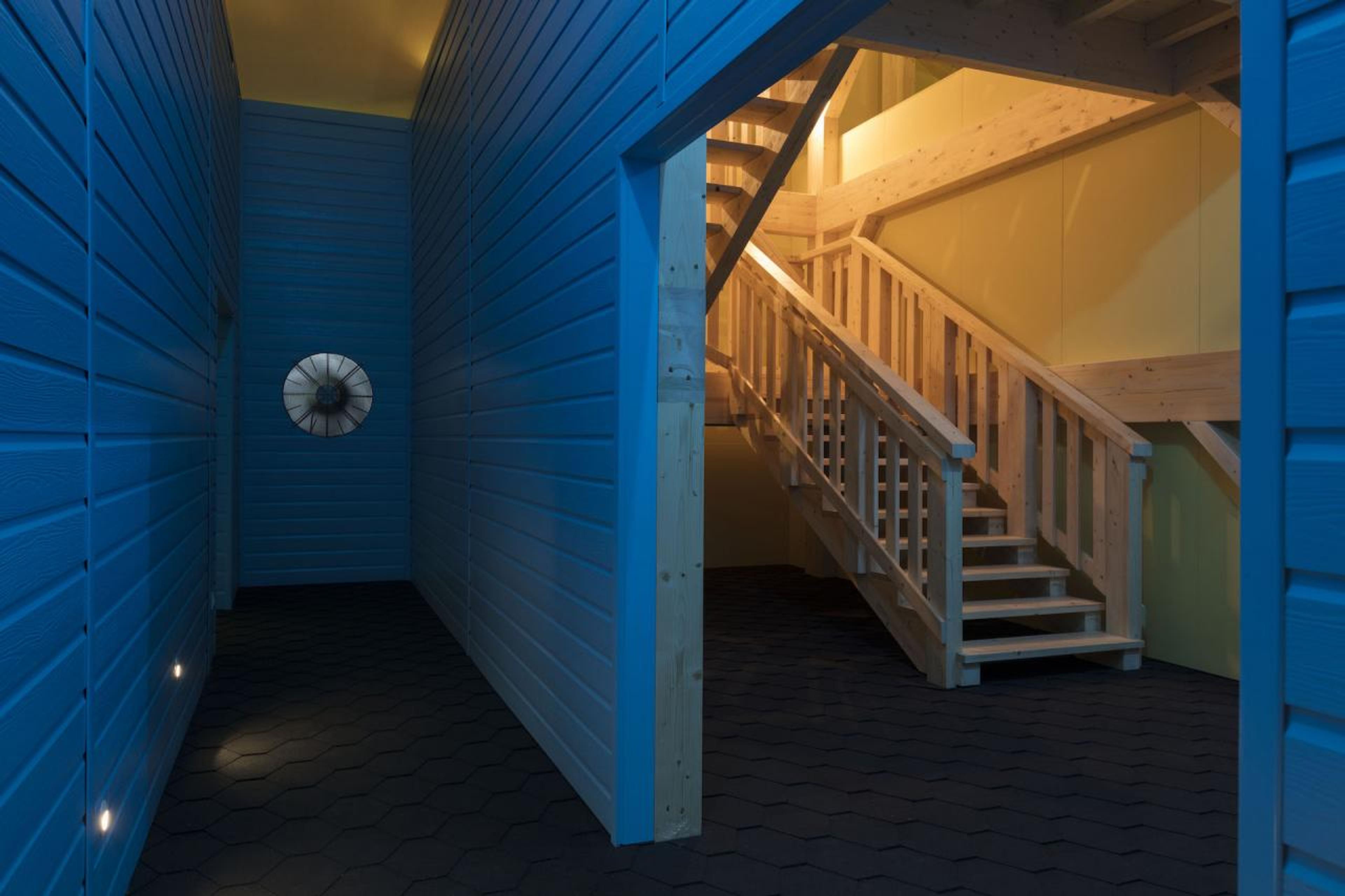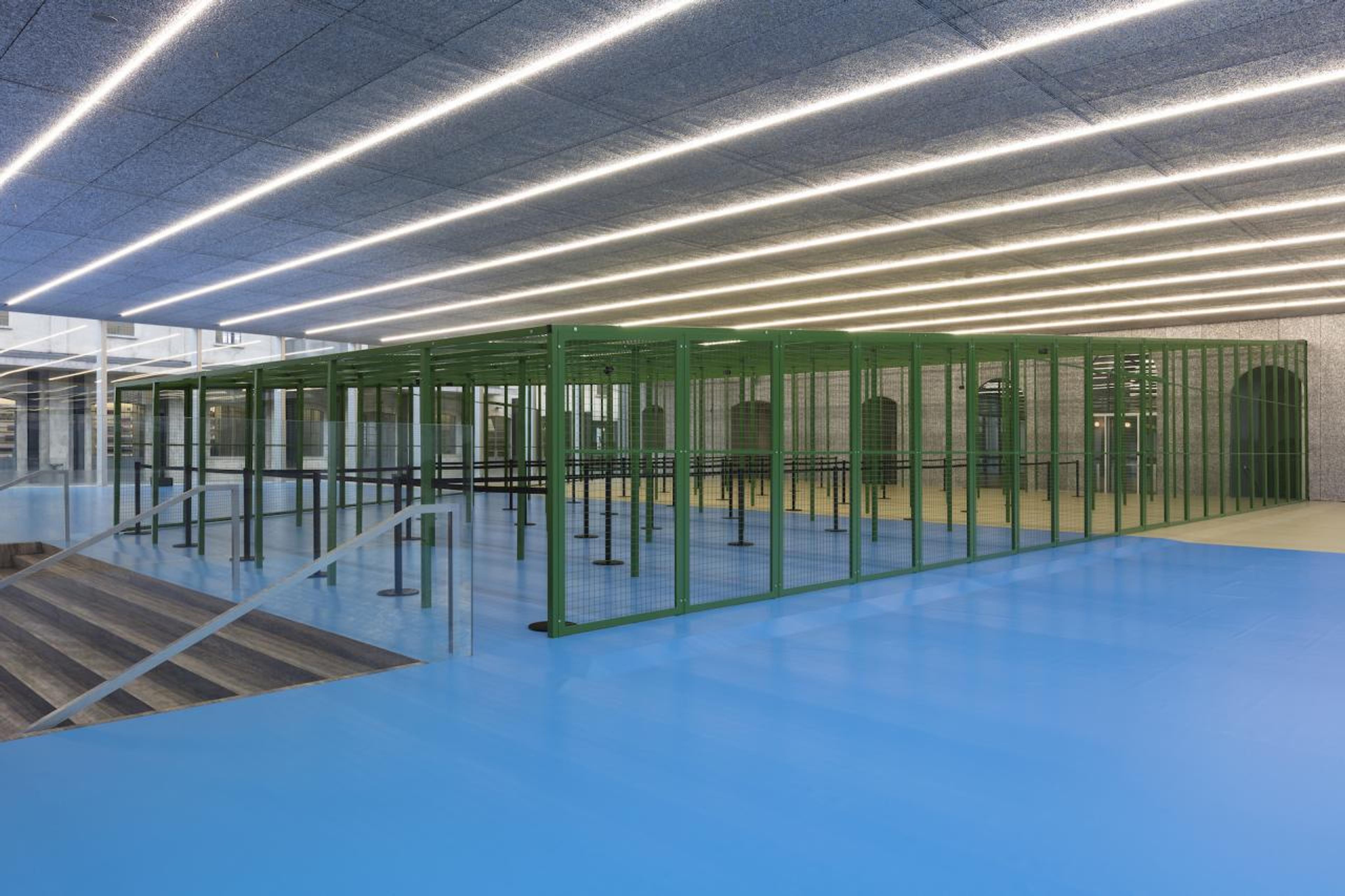It’s been three years since the last video by the American duo Lizzie Fitch (*1981) and Ryan Trecartin (*1981), and how the (art) world seems to have changed since. In 2016, we had Obama, with Trump still looming in the seemingly powerless alt-right media-sphere; we also had post-internet as a still-relatively useful term to describe a generation of artists working through questions of image dissemination, technology, and capitalism in an age of web 2.0.
At the centre of this cultural movement were the hallucinatory videos and installations by Fitch and Trecartin: accelerated, post-digital, and humorously gender fluid, they seemed for many to encapsulate the very essence of the aesthetic zeitgeist of art of the 2010s. It’s therefore exciting to re-encounter the duo at the penultimate year of this decade, which has changed both America and art so vividly. And at the Prada Foundation, nonetheless – Italy’s, if not the world’s, most darkly shimmering corporate monolith of art institutions; a (globally growing) model allowing for mega-commissions of unprecedented scale, which Trecartin and Fitch clearly excel at.
Exhibition view of “Lizzie Fitch | Ryan Trecartin: Whether Line”, Fondazione Prada, 2019 Photo Andrea Rossetti, Courtesy Fondazione Prada
With poignant self-awareness of the dystopian exhibition context, the duo’s ambitious installation at Prada begins by visitors entering an absurdly long iron fenced tunnel, leading to another equally long maze of queue stanchions. After several minutes of circuiting this designated pathway, where fragments of intemperate conversations blast from speakers above, we finally reach a massive hobby barn constructed inside Prada’s vast exhibition halls.
Whether Line is the outcome of several years of the artists living, writing, set-building and shooting on a sizable piece of land near the small town of Athens, Ohio in America’s Midwest. Here, Fitch and Trecartin have – in line with past productions – kept busy enrolling friends to engage in their absurdist role-play in a self-constructed haunted house of rooms, porches and forest towers, subsequently editing the footage to procure a hyperactive, unsettling, and deeply hilarious two-hour “movie” Plot Front (2019). Their trademark cinematography, though noticeably less colour-saturated today, remains effective: the frantic cutting of scenes and sudden and violent overlays of pop music over dialogue feels eerily similar to the house style of reality television shows such as Keeping Up with the Kardashians or The Real Housewives of , where tight editing stands in lieu of actual narrative cohesion. Here, however, this highly polished strategy accelerates to finally collapse onto itself; clips get stuck in a loop, music plays in wrong times, language erodes, leaving behind only the harrowing sound of lips smacking. These techniques repeatedly throw characters into a kind of dramaturgical vacuum, exposing the simulated affects and hollowed dialogue of Fitch and Trecartin’s haunted but never unfamiliar media world. Or as one of their own characters brilliantly summarize the conundrum of narrativity of the contemporary: “It’s a story – and no one likes stories anymore.”
Exhibition view of “Lizzie Fitch | Ryan Trecartin: Whether Line”, Fondazione Prada, 2019 Photo Andrea Rossetti, Courtesy Fondazione Prada Lizzie Fitch | Ryan Trecartin Plot Front, 2019 4K video, color, sound, 1hr 45min approx. Wood, sheet metal, carpet, perforated metal acoustical panels, drywall, paint, PVC siding, bituminous sheath, rockers, lights, ambient sound
With Whether Line , Fitch and Trecartin set out to investigate back-to-land ideologies that have flourished particularly in America in recent Trump years. Through a series of more or less connected scenes, the video unfolds as a nightmarish (and seemingly never-ending!) portrayal of a recently established cult, made up of Amish drag queens, cosmopolitan émigrés and local town freaks (who go to great lengths to make it clear that they’re not a cult).
By tackling Rural America, the duo gains access to a myriad of new dramaturgical and aesthetic vocabularies, which all manifest brilliantly in both the installation and video. The constructed barn is kept in classic Walmart-sourced “Carpenter Gothic” (a simulacra of architecture in its own right), while the video overspills with heavily familiar signifiers: town girls holding pumpkins while gossiping and twirling their hair, never-ending DIY carpeting projects, rocking chairs, guns, midnight graveyards trips, para-sexual group exercises in nature, and thick midwestern accents. As a piece of stylized and immersive piece of contemporary American folklore, Whether Line recalls the 20th-century paintings of Grant Wood as much as the reality classic The Simple Life – two disparate but great examples of American culture revelling in its own self-mediated absurdity. With punchy one-liners such as “fuck this community of queer gamer designers,” “you have a weird relationship to laughter – it must be because you’re in real estate,” “we’re really into privacy these days” or the already-iconic retort “I am not a museum, bitch!”, the artists speak to a particular contemporary American condition and affect so perfectly that it’s hard to really explain.
Exhibition view of “Lizzie Fitch | Ryan Trecartin: Whether Line”, Fondazione Prada, 2019 Photo Andrea Rossetti, Courtesy Fondazione Prada Lizzie Fitch | Ryan Trecartin, Property Bath, 2019 with Rhett LaRue 4 channel 4K video, color, sound. Wood, sheet metal, drywall, paint, PVC siding, bituminous sheath, fabric, stanchions, fans, lights, ambient sound
But at the heart of the dizzying non-narrative of the main video Plot Front , a poignant commentary on land, property, and identity emerges. In their attempt to legitimize their newly established community in the countryside, the highly overbearing characters repeatedly rehash real estate lingo and local history trivia to the point of semiotic collapse. “My property manager recently had me registered as a historic element,” tells one member proudly in her explanation of how to succeed in local real estate speculation; “I still think I’m unincorporated,” responds another, somewhat without a clue; “My grandma STOLE this land!” boasts a third, as she begins to talk about the benefits of the regional harvest season.
Amish costume aside, Fitch and Trecartin expose the ghost of settler colonialism that still haunts contemporary rural America, where the improvised property laws of the first European immigrants still inform the idea of land ownership and property.
As the discourse emerging from Trump’s America has shown in the past years, “history” figures here as nothing but a kind of politicized simulacra – much like a Fitch/Trecartin film – yet one imbued with heavy ideological power, legitimizing belonging through ownership. “An item – a site – a living location” is continuously repeated in the video by a dumbfounded Trecartin in Amish femme drag: eventually, individuals become the annexed plots that they’ve chosen to inhabit, paving the way for an aggressive appropriation of identity political discourse so as to legitimize their existence as “authentic”. When two local men come looking for their run-away sisters, a service-oriented cult member ends up confusing them for both products and urban areas: “Do you have receipts for your sisters?”; “So do you want to return them?”; “Was your sister gentrified?”
Surrounding the frantic activity and seemingly never-ending construction work of the settlement lies the looming American wilderness, dense and vast, as conveyed in the second four-channel video installation of the exhibition ( Property Bath , 2019), comprised mostly of shots of nature and birds. Fitch and Trecartin’s treatment of “the pastoral” speak not only to rural America’s estrangement from its untamed surroundings but with cultured/urban America’s alienation with the rural itself. “What could be more natural – we’re IN nature ?” observes one of the characters as she points to the surrounding forest, to which her confidante replies: “It’s as beautiful as one of the earliest iPhone screen savers out here – really makes you think”.
In the age of Trump, it feels that much can be mined from this social and aesthetic discontinuity, particular when explored through the neurotic and bewildering lens of Fitch and Trecartin – “stupid city kids thinking they’re playing a back-to-land game,” as they themselves acknowledge in the film. Yet, in playing this game, the duo manages to summarize the American media condition with a rare precision once again.
Production still from Whether Line Photo Fitch | Trecartin Studio
Production still from Whether Line Photo Fitch | Trecartin Studio
Production still from Whether Line Photo Fitch | Trecartin Studio
Exhibition view of “Lizzie Fitch | Ryan Trecartin: Whether Line”, Fondazione Prada, 2019 Photo Andrea Rossetti, Courtesy Fondazione Prada
Exhibition view of “Lizzie Fitch | Ryan Trecartin: Whether Line”, Fondazione Prada, 2019 Photo Andrea Rossetti, Courtesy Fondazione Prada
Exhibition view of “Lizzie Fitch | Ryan Trecartin: Whether Line”, Fondazione Prada, 2019 Photo Andrea Rossetti, Courtesy Fondazione Prada
6 April – 5 August 2019
The project is accompanied by a book published by Fondazione Prada focusing on Fitch and Trecartin’s collaborative practice which began in 2000.




